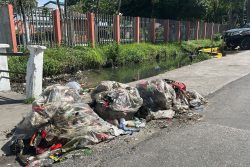The latest strategic plan for the University of Guyana on which we reported last week, in its generality really doesn’t tell us anything which we didn’t know already and which earlier reports hadn’t also identified. The bottom line is that you cannot get a university worthy of the name on the cheap, and that is what we have been futilely trying to do for many years. The evidence of this was all around, from the non-functioning toilets to the lack of equipment in the laboratories to a library with depleted stock and no current journals, to the quality of the teaching complement, and so on. As in all such cases, there were always certain areas which were better endowed than others, and some where the teachers and the students were a credit to UG, but in a larger sense the nation’s premier tertiary educational institution was not delivering “education, learning and research of a standard required,” or securing “the advancement of knowledge and the diffusion… of arts, sciences and learning throughout Guyana” as was originally intended when it was set up in 1963.
While mentioning the plethora of challenges the university faces, and listing the initiatives proposed to address some of these, the document really only goes into detail about UG’s financial crisis. It does however itemise the consequences of a funding deficiency, such as defective and insufficient physical facilities, inadequate learning resources, and uncompetitive staff remuneration, all of which in turn affect the quality of education offered.
The cost of training a student has increased substantially since tuition fees were first introduced, the report says, and in 2007-08, “the operational cost per student was… 170% greater than the basic tuition fee in local currency and 71% in US$.” It went on to warn that these figures were based on the operational cost of the university as defined by its income, but that this cost was insufficient to make it possible for UG to operate at a standard it considered desirable. In other words, the tuition fees were not set at an economic level.
In addition to the fees and some negligible income from other sources, there is the government grant to the institution, which currently represents 41% of the total income to the Turkeyen campus. However, the Strategic Plan said that UG’s capital and recurrent expenditure had always exceeded the government provisions. (The figures for Turkeyen are a little different from those for Tain, but the Berbice campus too showed a deficit in 2007-08.) The problem is exacerbated by the fact that internationally, “the cost of training each student at the tertiary level generally tends to increase each year.”
In terms of enlarging the university’s income, the proposal is to have a new tuition fee structure established by 2010, and what is described as a “New basis and rhythm for arrangements of subvention payments negotiated…” as well as the internal management of the capital grant. The truth of the matter is that introducing a new fee structure and securing a larger subvention are decisions which lie solely within the political arena, and we are already hovering on the cusp of a pre-election zone. This means that those in office, even if they were disposed to lend a ready ear to the university’s financial woes – something which is by no means certain – would be unlikely to entertain a hike in fees at this time. It is possible that some increase in the subvention might be forthcoming, but certainly not at the level which is required to rescue the university from its current penury.
Ideas were put forward for generating new income, although even if successful, the time-scale given in the plan for these to produce results appeared unduly optimistic.
As mentioned above, there was little enlargement on other matters, even on framework issues. Without giving much elaboration or even a rationale argued out in full, for example, the report did emphasize a focus on science and technology. In the first instance (as was recognized) that in particular would require a very substantial financial investment, not to mention the recruitment of sufficient staff both technical and academic. There is, however, another impediment, which is mentioned briefly only in passing in a different connection elsewhere in the document. Under the rubric of ‘Threats,’ there is a reference to “Weak feeder institutions including secondary schools.”
This is a problem which has been noted in earlier reports; after all, UG is the final institutional stage of the education process, and its capacity to function as a centre of learning in the true sense, will be affected by the quality of education available further down the system.
Where science and technology specifically are concerned, many of the schools themselves require investment in laboratory equipment, etc, while it has long been acknowledged that there is a shortage of secondary school teachers in the field. Those barriers too would have to be addressed before UG would have any success focusing on science, etc. In addition, there would have to be a concerted effort to encourage students to do science subjects at the secondary level (their numbers are dwindling), so they would be tempted to follow through at the tertiary stage.
The ‘Weakness’ headings tabulated an assortment of other problems too, which included such things as, “Outdated governance and industrial relations provisions”; “Uneven campus capabilities and inconsistent commitment to excellence”; “Weak management systems and implementation skills”; and “Invasive frequency and duration of meetings that infringe on time for follow-up activities.” As for the meetings, anyone with even a fleeting acquaintance with UG is familiar with the intrusive nature of these; however, it may be that the original arrangements were probably designed with democracy in mind, and democracy can be time-consuming. Having said that, nowadays, perhaps, some of the various boards and committees have become cumbersome and represent bureaucratic obstacles to rational administration, more than anything else.
Elsewhere, reference is made to the need to update the UG statutes, so they would meet “contemporary requirements,” although exactly what these were was not spelt out. This was just associated with the strategic goal of improving “institutional governance,” etc. For obvious reasons, no direct comment was made on the need for university autonomy, but perhaps the drafters of the document did have this as one of their objectives when writing this section. Political interference in the operations of UG is a subject which has received much attention; it is something which is made possible by the composition of the institution’s highest body, the University Council, and there can be no autonomy until that is reformed. Understandably any government which funds a university wants accountability and to be satisfied about how money is spent, but it does not need to control the council – as opposed to having representation on it – in order to do that.









